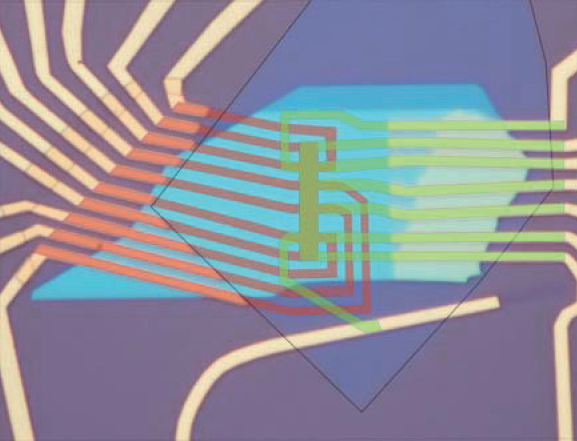Graphene ‘Big Mac’ may replace silicon chips, say graphene discoverers
October 10, 2011

Prototype of a future graphene-based chip: graphene layers (orange and green) are interleaved with boron nitrate layers (light and dark blue) (credit: L. A. Ponomarenko et al./Nature Physics)
By interleaving two sheets of graphene with another two-dimensional material, boron nitrate, University of Manchester scientists have created the graphene “Big Mac” — a four-layered structure that could replace the silicon chip.
The structure allowed the researchers for the first time to observe how graphene behaves when unaffected by the environment.
The structure’s properties could lead to flexible touch-screen phones and computers, lighter aircraft, wallpaper-thin HDTV sets, and superfast Internet connections.
Graphene, the world’s thinnest, strongest, and most conductive material, was discovered at the University of Manchester in 2004 by Professor Andre Geim and Professor Kostya Novoselov, winning the two scientists the Nobel Prize for Physics last year.
Ref.: L. A. Ponomarenko, et al., Tunable metal–insulator transition in double-layer graphene heterostructures, Nature Physics, 2011; [DOI:10.1038/nphys2114]